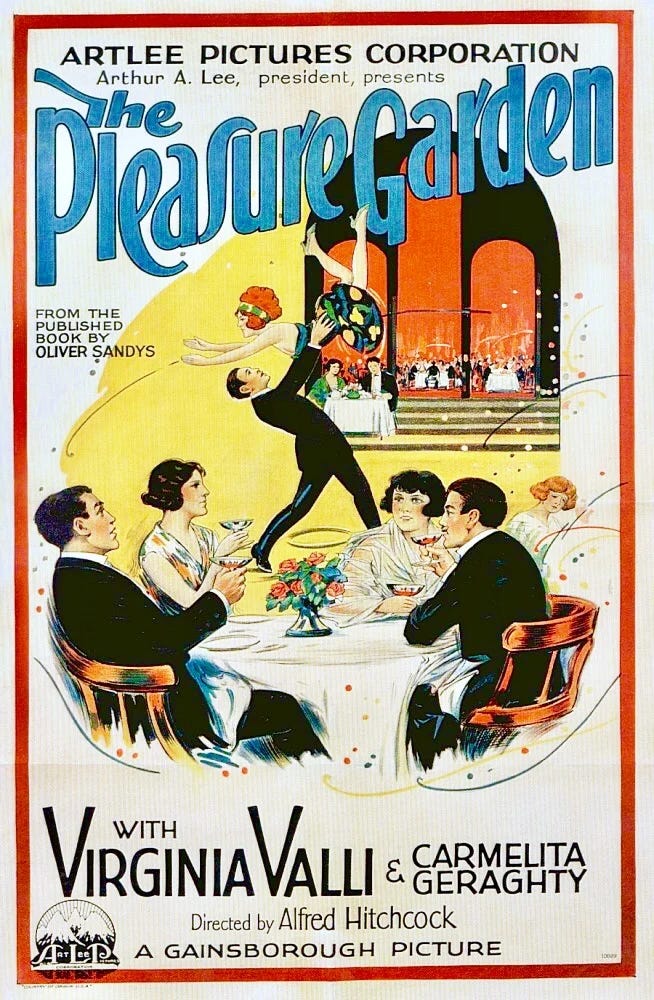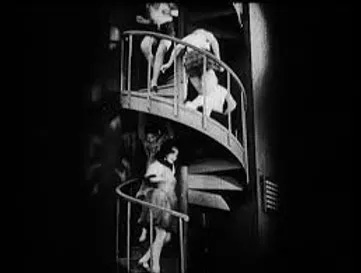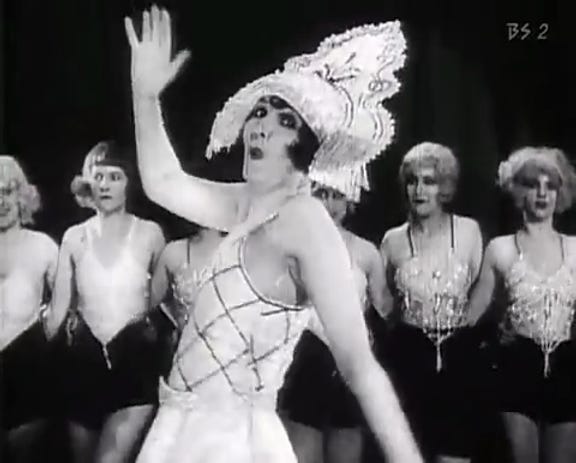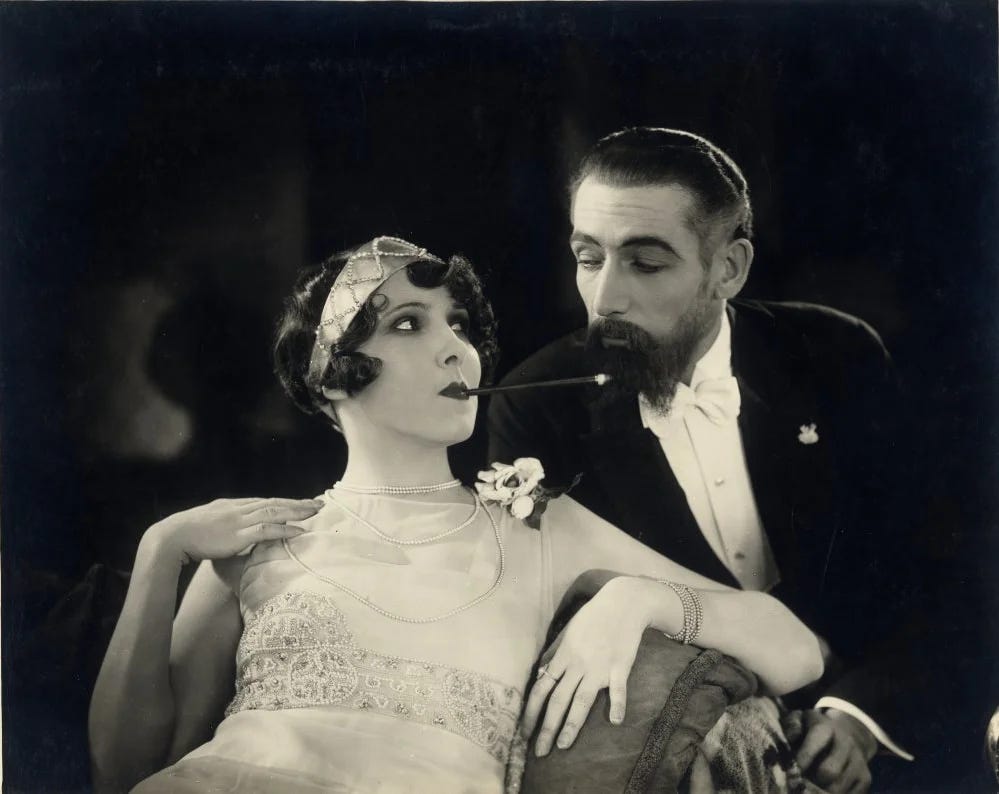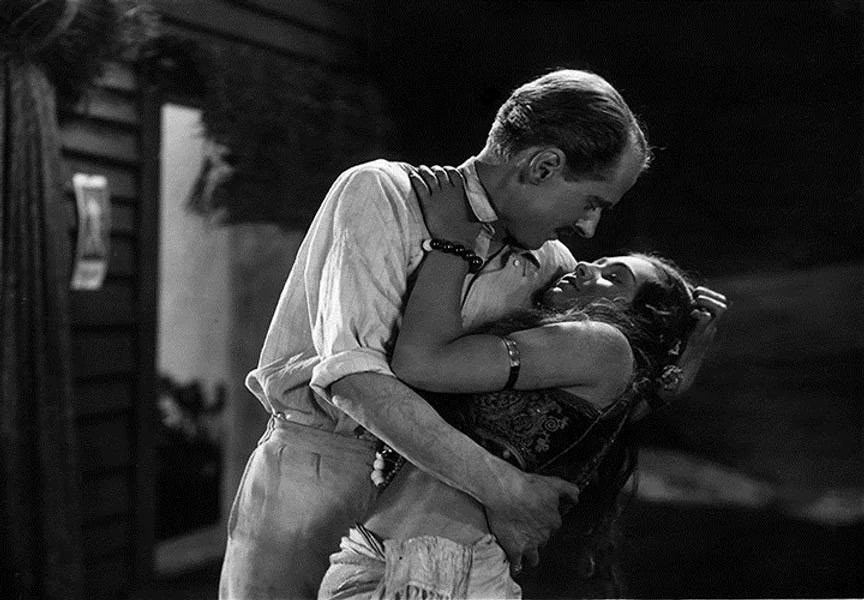The Alfred Hitchcock Project #1: The Pleasure Garden (1925)
Produced by Michael Balcon, Erich Pommer
Screenplay by Eliot Stannard
Based on the novel The Pleasure Garden by Oliver Sandys
Cinematography by Gaetano di Ventimiglia
Gainsborough Pictures
(1:01) YouTube
I wish I could’ve asked Alfred Hitchcock what was running through his mind when he shot the opening scene of The Pleasure Garden as several chorus girls rapidly descend a spiral staircase to spill out onto a stage. I also wish I could’ve asked him if that opening had anything to do with the Mission San Juan Bautista scene in Vertigo or several of his other pictures involving staircases. If I had asked, the master probably would’ve turned to me and said, “Whatever are you going on about?”
Maybe Hitchcock did talk about this and I’ll run across it in my reading, but I have to imagine that The Pleasure Garden held a special place in Hitchcock’s career. Like many “first” projects, perhaps the director cringed while watching or thinking about the film later in life. But like all first steps, I’m sure the completed project was a personal milestone. The Pleasure Garden is neither a great film nor an embarrassment, but rather an interesting and telling look at what would follow from the first-time director.
The film takes its title from the Pleasure Garden Theatre in London, where a chorus girl named Patsy (Virginia Valli) offers to help Jill (Carmelita Geraghty), a girl who has come to audition for the theatre’s proprietor Mr. Hamilton (Georg H. Schnell).
Unfortunately, Jill’s money is stolen, so Patsy takes her in and shows her the ropes. Newcomer Jill wins the audition and becomes a stage sensation, which attracts the attention of several wealthy, lecherous men including Prince Ivan (Karl Falkenberg, above). But what about Jill’s fiancé Hugh (John Stuart) and his friend Levet (Miles Mander), who may have eyes for Patsy?
If you think this sounds formulaic and know exactly where it’s going, you may be right, and then again, maybe not. The action travels from London to Italy and Africa, and transitions from what we think is going to be a light romantic show-biz tale with bits of comedy thrown in. Instead, we get something much darker.
What’s clear in this early effort is Hitchcock’s confidence in his storytelling abilities. He always seems to know exactly where to place the camera and for precisely how long. There are few wasted shots, and his visual narrative is easy to follow. I was reminded of several films I’ve seen from the 1930s and early ‘40s in which directors linger too long on a shot or scene, disrupting a visual rhythm or causing sequences to stagnate. Already at this early stage, Hitchcock rarely makes such mistakes.
There’s a nice visual touch in the second half of the film, a transition from a hand waving a handkerchief in a “goodbye” gesture to another hand waving in anticipation. The first wave conveys the beginnings of longing; the second, the allure of desire, both directed at the same person, but from different people. Another interesting visual occurs late in the film involving a sword, which points (no pun intended) to one of Hitchcock’s recurring themes. The sword, of course, implies violence, but also serves as a sexual metaphor, almost to the point of comedy. Hitchcock became a master of turning sexual situations into moments of danger and even death. Although brief, the scene serves as an introduction to a motif we’ll see again and again with Hitchcock.
Ultimately The Pleasure Garden serves as an introduction to several Hitchcock themes: theft, betrayal, murder, broken relationships, sexuality, and obsession. I watched the film online, a version that ran for just over an hour. The IMDb entry has a running time of 75 minutes. If the version I watched was truncated, I wonder if the cut(s) occurred in the second half of the film. Further information would be welcome, so if you have any information, please comment below.




